Health and Fitness Tracking
Apple Watch 3 – Health and fitness tracking Many of watchOS 4’s improvements centre around fitness tracking, which was already a significant focus for the Apple Watch Series 2. As such, don’t be surprised to see health and life insurance firms offering up Apple Watch devices as part of their plans. In the UK for […]
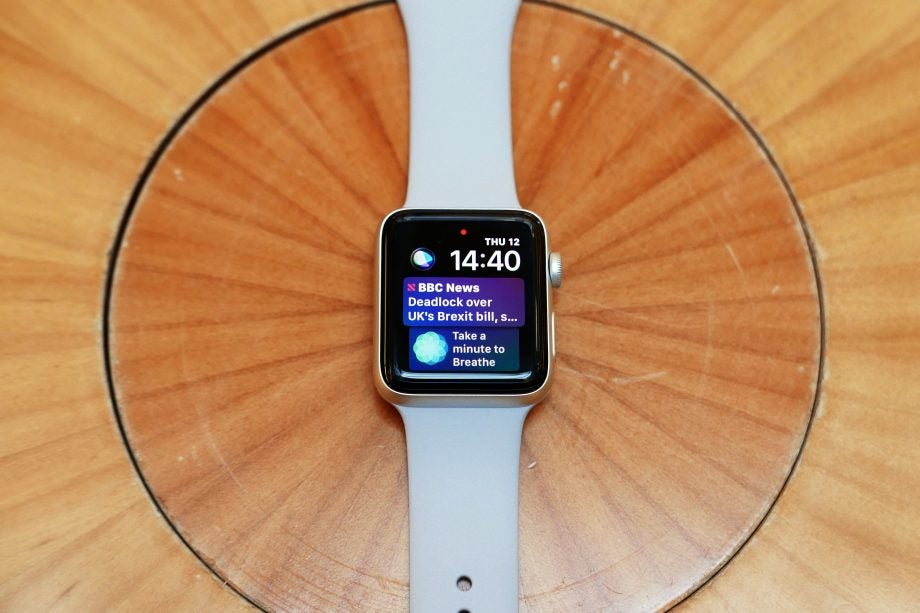
Sections
- Page 1 Apple Watch Series 3 Review
- Page 2 Display, Speaker and LTE Performance Review
- Page 3 Performance and watchOS 4 Review
- Page 4 Health and Fitness Tracking Review
- Page 5 Battery Life and Verdict Review
Verdict
Apple Watch 3 – Health and fitness tracking
Many of watchOS 4’s improvements centre around fitness tracking, which was already a significant focus for the Apple Watch Series 2. As such, don’t be surprised to see health and life insurance firms offering up Apple Watch devices as part of their plans.
In the UK for instance you can currently get an Apple Watch 3 with Vitality for free or at a reduced price depending on how active you’ve been. Vitality lets you spread the cost across 24 months, charging between no charge or £12.50 a month based on how health-conscious you’ve been. It’s a great incentive and way to not pay outright for the Apple Watch, provided you take out a suitable insurance plan that is.
In the Watch Series 3, the GPS from the Series 2 is now joined by an altimeter so the device can keep an eye on the number of stairs you climb throughout the day, as well as the elevation data during your workouts. Those hill sprints will now be tracked in all their glory. Previous Apple Watch models had to piggyback the elevation data from your iPhone, so those opting for a phone-free experience missed out on this extra layer of information.
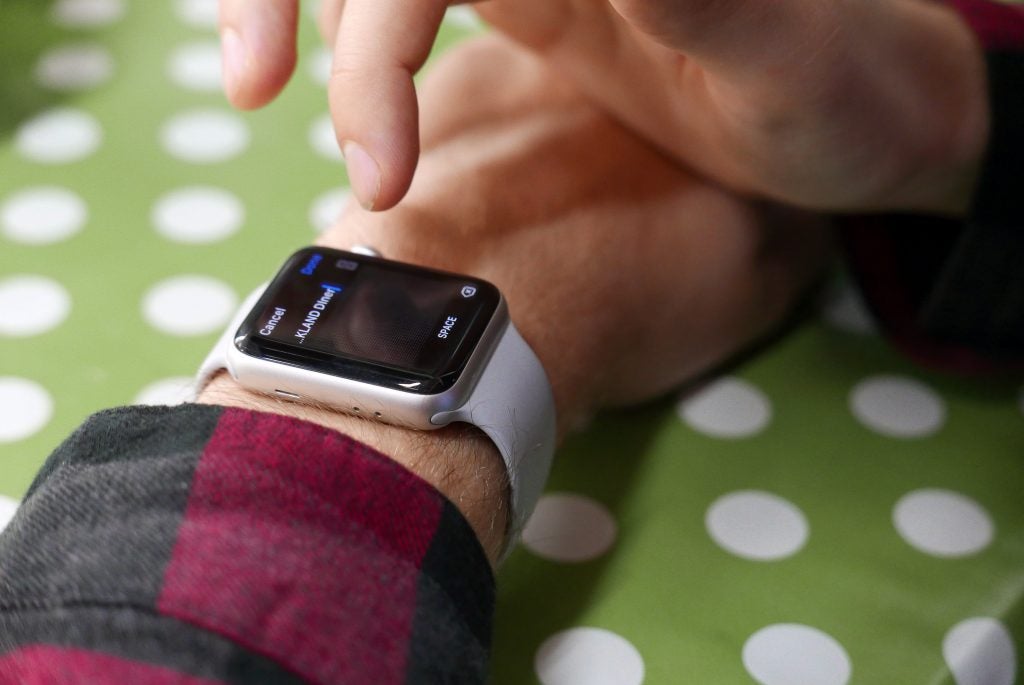
The day-to-day activity tracking has improved, too, although it continues to focus on three activity rings: move, exercise and stand targets. A dedicated activity-based watch face make it easy to determine your progress at a glance, or you can simply dive into the Activity app. The ring-based progress is an easy primer to ensure you’re conscious of your activity, helping to motivate you to ‘close the rings’. You’ll receive prompts throughout the day, which watchOS 4 improves through better context and motivation.
For example, you might be made aware that you’re lagging behind a little in your move target compared to previous days, or that you’ll close a ring if you take an 11-minute brisk walk. Or, on waking up the Watch will notify that you closed all three rings the previous day and to aim for the same today. Such prompts are likely to put you in the right frame of mind.
Related: Best fitness trackers

If you’re close to unlocking a new achievement then the Apple Watch 3 will also provide a gentle prod in the right direction – but only when a target is within reach. Apple is careful to not demotivate with all the carrot dangling.
Personally, I’d have liked to have seen a stairs goal that makes use of the altimeter. While Apple is apprehensive about overwhelming people with any more ‘rings’, a more prominent placement of the ‘Flights’ recording would have been more motivating – especially in driving you to take the stairs or walk up the escalator in place of using a lift.
Right now, you can view data on the number of flights climbed, but only through scrolling down the Activity app. Plus, you don’t receive any prompts throughout the day detailing how many flights you’ve climbed, as you do with other wearables. In fact, it’s very easy to forget that such data is being recorded.
Related: How the Apple Watch stacks up against dedicated fitness trackers
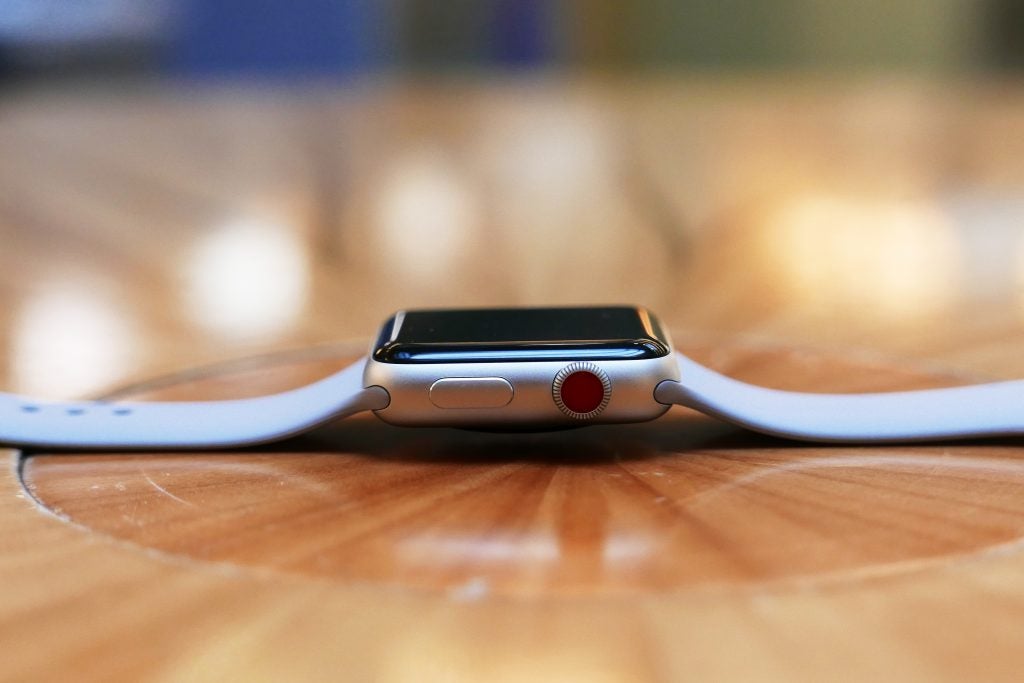
The Breathe app makes a return, urging you to take a few minutes in the day for some relaxing breathing exercises. It’s well implemented, with the haptic feedback helping you to time your breathing without intensely concentrating on the screen and ruining the effect. The Siri watch face will also remind you to take some time out.
There’s no native sleep tracking, although there are third-party apps that fill the void. I’d still love to see Apple’s own take on sleep tracking. But for now I’ve been using AutoSleep, which works well – even if it isn’t as approachable as Fitbit’s offering.
Related: Best mattress
Other significant watchOS 4 changes come to the Workout app. The biggest is the ability to add exercises to the same workout, which is ideal for circuit trainers and triathletes in particular. Now you can start a workout, say a run, then without stopping it, add another exercise such as a bike ride. All of the exercises are then logged as one continuous workout, without the need to be counted down into the new exercise, which wastes precious tracking time. It’s a much more seamless experience. There’s also new support for high-intensity interval training (HIIT).
The Apple Watch can even communicate with certain gym equipment through NFC to sync workout data through something Apple calls GymKit.
This allows for two-way communication with equipment such as treadmills or elliptical data. With just a tap your Apple Watch can share your important biometric data such as age, height and weight, saving you time completing this on the equipment and meaning you get more accurate calorie burn data. In turn, the equipment can share its own data such as distance and elevation. It means your indoor workouts are better tracked.
I tried out GymKit at the UK launch and you can read more about my experience here.
Related: What is HIIT?

A new Heart Rate app provides more in-depth info on what your ticker is up to. Now you can view heart rate data throughout the day on a scatter graph, as well as important metrics such as your resting heart rate and walking average.
Tucked away in the Apple Health app on your iPhone is your Heart Rate Variability, which is a measure of the variation in the time interval between one heart beat and the next. Heart rate recovery is also only viewable from a workout in the Activity app back on your iPhone. I felt like a lot of the useful data was spread across different locations a little confusingly.
You can also engage elevated heart rate warnings, which set off an alarm when your resting heart rate spikes over a set level (by default 120 beats per minute). For some folk a similar alarm would be useful for a suddenly decreasing heart rate – but this isn’t currently supported.
https://twitter.com/_jamestgreen/status/918849102741458944
One such example of an Apple Watch’s heart rate data identifying a health condition. In this case it was the HeartWatch app that delivered the important alert.
Heart rhythm is another metric the Apple Watch will monitor, especially around atrial fibrillation. This is characterised by irregular and often abnormally fast heart rhythms. This could lead to dizziness, shortness of breath or heart palpitations as your heart races as high as 100BPM. Most worrying is that atrial fibrillation doesn’t always show symptoms, so sufferers could be unaware. It’s here that the Apple Watch could be a fantastic medical tool.
All of this heart rate data is being used by the company as part of an Apple Heart Study in partnership with Stanford Medicine.
Using the Cardiogram app for Apple Watch, a clinical study even found that data garnered from the wearable could detect diabetes with an 85% success rate (via TechCrunch). The Apple Watch has even been used to detect other health conditions such as abnormal heart rhythm, sleep apnoea and hypertension to varying degrees of accuracy. Right now much of the data is being used to validate wider studies or train neural networks for identifying conditions, but the potential for predicting or detecting health conditions on a per person basis is very exciting.
Related: What are heart rate zones?
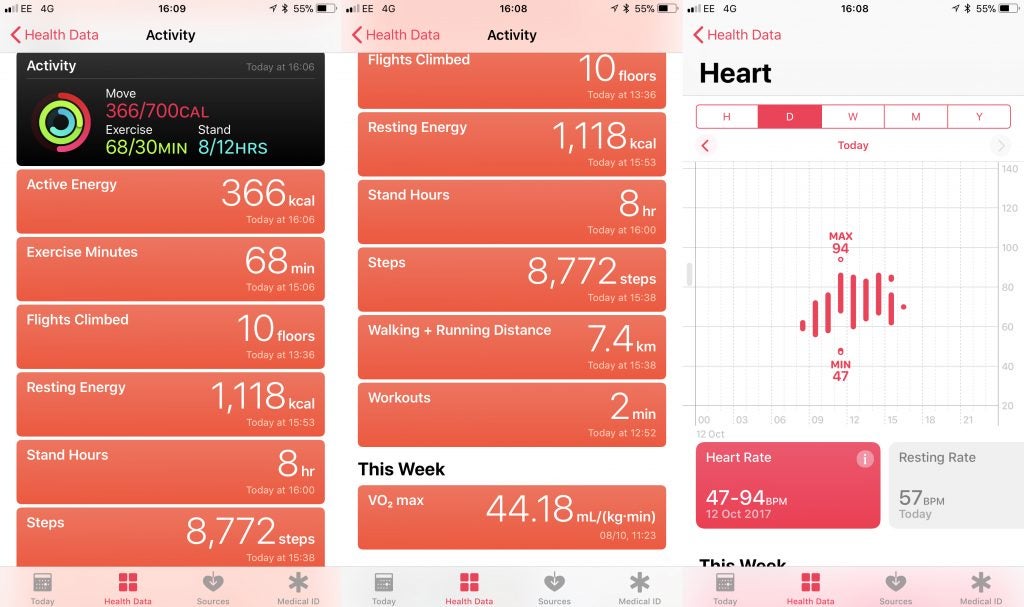
The Apple Watch can now also estimate your VO2 Max, which is a good indicator of your overall fitness. Oddly, again, this is hidden away in the Health app on your iPhone, rather than appearing in the Activity app or anywhere on the Watch.
I’m going to assume that Apple is using a different estimation method than the standard Firstbeat method used by practically every other wearables maker. Its VO2 estimation was considerably lower than what I’ve been getting elsewhere – which, in all honesty, hurt my ego a little. But as with all metrics, it was consistent throughout testing, so it remains a good measure to keep an eye on over time.
Related: What is VO2 Max?
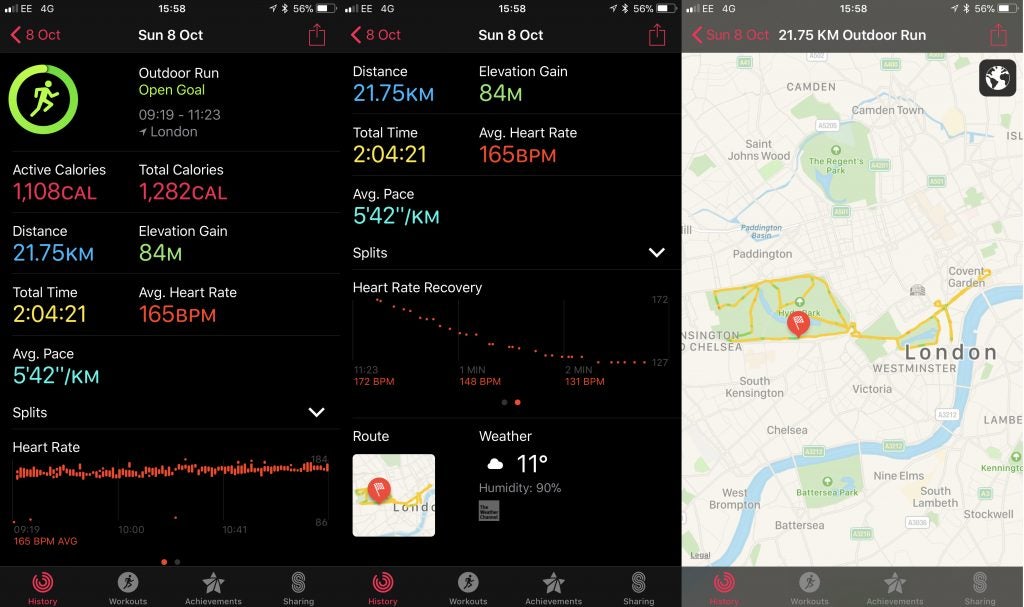
The returning GPS is a welcome tool for runners and cyclists alike. It’s also something third-party apps can make use of for more specialised sports. It worked great for running, tracking the distance closely to some official distances. Heart rate data collected during my runs was also accurate, with no puzzling spikes or drops. It was even spot on when compared to the reading taken from my ear through a Jabra Elite Sport.
Being able to go out for a run or a bike ride without a phone in tow, while still having a data connection and being able to listen to music through Bluetooth headphones, makes the Apple Watch an outstanding exercise companion. As does knowing that Apple Pay is available in case I get lost.
Swimming continues to be well handled by the Watch, with it nailing the lengths perfectly, while also being able to recognise different strokes. It’s as great a companion for the pool as it is the running track.
Ultimately, it’s around fitness where the Apple Watch has really come on leaps and bounds from its early days.


